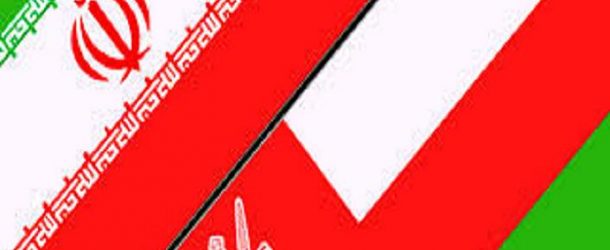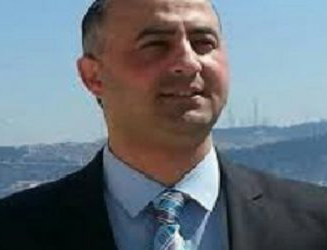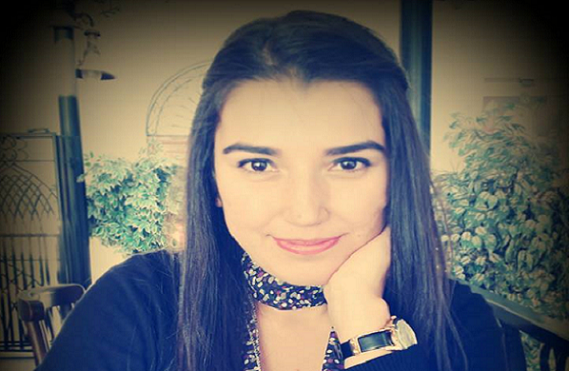The Middle East remains of a major geostrategic importance. Global powers found in the recent developments an opportunity to chart their way into the region; sending troops and reinforcements, rebuilding alliances and restoring old relations. Amidst this chaotic environment, a number of regional forces opted to adopt a different approach: soft power. It is obvious that such forces have found in soft power an efficient tool that can achieve what tanks and jets failed to do. In this article, four soft power models in the Middle East are assessed and analysed: Iran and Oman.
What is Soft Power?
Soft power refers to the ability to change what others think and do through attraction and persuasion rather than compulsion and coercion. Scholars are still divided and failed to agree on an exact definition of soft power which remains loose and vague. Joseph Nye was first to coin the term soft power and his definition of soft power is “getting others to want the outcomes that you want-co-opts people rather than coerces them.”
Nye (2004, 5) finds that the crux of soft power is shaping the preferences of others yet resources (either culture or laws or institutions) are significant in determining the effectiveness of soft power. The resources that produce soft power come chiefly from the values an actor (either an organization or a state) expresses in its culture (that can be transmitted through various means including commerce, tourism, personal contacts, visits, and exchanges). Throughout his book, Nye tries to demonstrate the various means of soft power, including public diplomacy, speeches, state branding, drama and TV shows, movies, education (universities, books, and scholarships), scientific centres, culture and notions (globalization and democracy), sport and Olympics, food, music, immigration, Nobel Prizes, Internet, video games, NGOs, Brands (cars and electronics), peace keeping missions, assistance to poor and developing countries (Nye 2004, 8-13). Nevertheless, the influence of soft power remains fragile and subject to distraction. Instability, chaos and wars are among various conditions that undermine the effects of soft power.
Iran and Soft Power
On the other hand, Iran has been always branded as a hard power, especially for its record of wars (with Iraq right after the revolution), alliance with regimes and groups widely recognized as violent or supporting terrorism and with fierce rhetoric against either the West or Israel. Nevertheless, whether you like it or not, Iran is moving slowly but steadily towards an extraordinary status and role in the Middle East. It succeeded in introducing a unique pattern whereby it is adept at converting hard power and coarse policies into effective and efficient soft power tools that serve its image and reputation. Throughout the past decade, it used soft power at times, hard power and both, in what Nye and other scholars labelled as smart power (Cammack, 2008).
Ali Bakeer finds that Iran’s soft power lies on three main pillars. First and foremost is history and culture that is based on a three- thousand- year civilization that had an impact on neighbouring regions. In the same context, tourism and cultural events are other important sources and Iran is classified as one of the best ten destinations in terms of history and archaeological sites. The Persian language can be seen as a major source of attraction since it has entered in the synthesis of many other languages including Turkish, Hindi, Urdu, Armenian, Georgian, Swahili and others. The 5 million Iranians in the Diaspora play as well a significant role in spreading Persian culture through Iranian restaurants, goods, songs and other social aspects.
The second pillar is political values. Iran introduced a unique political model that stems from Iran’s hybrid political system which adopts the concept of “religious democracy”. As a unique model of its kind and source of Iranian soft power, this model constitutes a substitute for traditional systems and is considered an appealing model for religious Muslims. The third pillar is foreign policy which is the largest source of soft power. Iranian Constitution refers clearly to the role of foreign policy which is based on “Islamic” values, fraternal commitment to all Muslims and full protection of the oppressed around the world. These offerings, along with the Iranian propositions on revolutionary and religious principles, are considered the bases of Iran’s soft power (Bakeer, 2013).
In light of the aforesaid facts, Iran, thus far, adopted ever-widening array of instruments to bolster its soft power and build alliances and partnerships throughout the Muslim and the Arab Worlds. Shiism became a palpable policy and Iran has been targeting Shiites in many countries around the world, through media campaigns, establishing cultural and religious centres, financially supporting Shiite minorities and recently politically and militarily assisting Shiite communities at the aim of strengthening their role and influence within their societies (for example Huthis in Yemen and Hezbollah in Lebanon).
Taking advantage of the widespread regional dismay from US policies, anti-America rhetoric became part of Iran’s official speeches. This was deemed vital state branding tools that would promote Iran’s status as a regional leader in face of foreign “hegemony”. As a result, Iran was able to form a network of regional allies under the name of “resistance axis”. Similar to other Middle Easter leaders, Iran used as well pro-Palestine slogans to gain popularity among Arab masses. Iran also tries to expand its influence through trade and investment. For instance, Iran cooperates with Turkey and Malaysia to design and manufacture cars for Islamic markets and its state-owned Khodro Company emerge as the largest carmaker in the region exporting over one million cars, trucks, and buses to over 30 countries in 2007 (Chorinm and Malka, 2008). Finally, the nuclear deal gave Iran’s soft power another boost, especially that it was able to avoid the war, lift the sanctions and evade any bargaining on other files (e.g. Hamas, Hezbollah, the Syrian regime).
Oman and Soft Power
In the midst of the regional critical developments, Oman appears as a peaceful oasis that rests aloof from enticements. This reality comes as a result of Oman’s entrenched set of qualities, beliefs and values that prioritize peace. For Oman, Soft power means peace. Oman’s soft power counts basically on two basic foundations; peace-making and state-branding. These are naturally interlocked and Oman was adept enough in realizing noteworthy results thanks to stability. In other words, stability is a crucial element in this equation and this encompasses both domestic and foreign (mainly regional) stability (Choe, 2012).
Domestically, Oman is such a peaceful and internally stable country. With the assistance of Iran (under the reign of Shah), Pakistan and Britain, Oman preserved its unity and was able to crush a foreign-backed Marxist insurgency in the 1970s in the westernmost province of Dhofar (Cafiero, 2016). Sultan Qaboos demonstrated unique ability to absorb this grievance wave with the message that the government would allow the province distinctive culture and identity and introduced huge development programmes and promoted strong economic growth. As a result, Dhofaris have responded well to the Sultan’s policy (Wheeldon, 2014).
Similarly, as part of the revolutionary wave popularly a series of demonstrations erupted in Oman, albeit these protests were peaceful and showed respect for the Sultan. In return, Sultan Qaboos accepted the petitions and undertook a number of steps to contain the unrest including reshuffling the governing cabinet and promising to give the legislative council more powers. The Sultan also pledged to create 50,000 government jobs and provide a monthly benefit of $390 to the unemployed (Worrall, 2012, 106-115).
Consequently, domestic stability has been an important asset for Oman and played a crucial role in attracting foreign direct investments and when others averted other regional projects, the Omani ones appear more appealing and promising. Not limited to economic gains, domestic stability, renaissance projects and good governance served raising Oman’s status and hence the goal of state-branding. Since the Sultan took power in 1970, the country was revolutionized and transformed strikingly through substantial investments in the various fields.
Oil revenues were pumped into public and private sectors allowing business to provide consistent growth and an increasing number of jobs. A huge network of roads, schools and hospitals were built and as an eventual result, WHO (World Health Organization) ranked Oman’s healthcare system as the 8th best in world in 2000 (Wheeldon, 2014). In a report issued in November 2010, UNDP (United Nations Development Programme) ranked Oman as number one out of 135 countries in the world in terms of human development achievement for the period of 1970-2010 (Choe, 2012).
With a crossroads of cultures, Oman’s multicultural identity gave the country the chance to promote itself as such. Muscat’s famous slogan became “a country where people of different ethnic backgrounds live in harmony and open to other peoples irrespective of religion, customs and heritage”. State-branding was not limited to international recognition, but also building and bolstering a national pride. The Sultanate tried to rejuvenate the feeling of pride among Omani nationals through upping Oman’s long history and tradition (Choe, 2012).
Perhaps Oman’s activism in the field of mediation and international peace demonstrates Muscat’s soft power capabilities and highlights the second aspect of its strategy towards foreign and regional stability. Oman believes that any dispute between countries should be resolved through dialogue. Ibrahim al Hamdani, Adviser at Oman’s Ministry of Information says: “Oman has always been the peacekeeper and a strong advocate of international friendship and harmony since the blessed Renaissance and has always kept its ideals of keeping away from any conflicts whatsoever. This neutral position gives Oman the unique advantage of being a mediator in international issues”.
In this respect, Oman played a valuable role in narrowing differences between various parties in dispute. When the other Gulf States opposed the US-Iran deal, Oman didn’t only support it but it also hosted the secret talks between the two governments. Oman’s neutral position gave the country a unique advantage of being a mediator in international issues. It played an instrumental role in freeing three American hikers arrested by Iran on espionage charges in 2011 (Gupta, 2015). This position made Sultan Qaboos succeeds in maintaining the trust and confidence of both the Americans and the Iranians and bringing them across the table behind closed curtains. One must concede then that the conclusion of the nuclear deal revealed an unforeseen Omani role.
This policy is not novel and holding the secreted talks between the two rivals during the Iraqi-Iranian war in Muscat is just a case in point. In Yemen, when Huthis are in control of the Capital, Oman remains the only Gulf country whose embassy in Sana is still running. Oman did not take part in the Saudi-led “Decisive Storm” military campaign against the Huthis and Saleh loyalists and kept channels open with them. It also played a pivotal role in handing over the body of a Moroccan pilot whose jet fell in territories controlled by the Huthis. Not surprisingly then, Muscat would be the logical destination for any potential negotiations between fighting parties.
Not limited to the Yemeni debacle, Oman has leveraged its neutrality to develop trustworthy relationships with all sides in the Syrian crisis, enabling the sultanate to serve as an acceptable mediator that no other Arab or Gulf country could. When almost every Arab and Gulf country boycotted and attacked Assad, Oman maintained its relations with the Syrian regime. In August 2015, Syria’s foreign minister met his counterpart in Muscat and in October in the same year the Omani foreign minister Yusuf bin Alawi had met with Assad in Damascus (Cafiero 2016). In the same year, the sultanate mediated in Algeria in order to help containing an unannounced sectarian crisis between Ibadi Amazigh and some Arabs associate the Maliki School (see Noon Post Editorial 2015).
Conclusion
A comparative analysis of the aforementioned models was deemed necessary to highlight another form of competition in the region: soft power. The employment of each model depends on certain tools and carries different goals. On the one hand, Iran’s soft power model lies chiefly on ethnic and revolutionary values and reflects expansionist objectives. On the other hand, Oman utilized low-profile soft power tools and strategy at the aim of maintaining its status as a neutral actor and evade the effects of prevalent regional polarization. Thus far, Oman’s quiet approach paid off and produced Oman with coveted results. The Iranian soft power model has been successful as well in attracting sympathizers, supporters and allies. However, Iran’s model rests on values that intertwine with other ideals that can be a source of conflicts and hence can easily be transformed into hard power. In nutshell, one may argue that Iran’s soft power can be another source of regional instability when Oman’s soft power seeks stability and peaceful resolution of conflicts.
Originally published on E-International Relations.
Dr. Fadi ELHUSSEINI
REFERENCES
- Bakeer, A. (2013). Ektishaf al-kuwat al-Naema al-Irania: al-Kudorat W Hodod al-Taatheer [Discovering Iran’s soft power: Capacity and limits of influence]. [online] Aljazeera Centre for Studies. Available at: http://studies.aljazeera.net/files/iranandstrengthfactors/2013/04/2013411102151266414.html [Accessed 6 Jan. 2014].
- Cafiero, G. (2016). Oman, Stuck between Saudi Arabia and Iran. [online] Al-Monitor. Available at: http://www.al-monitor.com/pulse/originals/2016/01/oman-saudi-arabia-iran-tension-execution-nimr-mediator.html# [Accessed 27 Mar. 2016].
- Cammack, P. (2008). Smart Power and US Leadership: A Critique of Joseph Nye. 49th Parallel, 22 (5).
- Choe, J. (2012). Oman’s soft power and national brand. [online] Times of Oman. Available at: http://timesofoman.com/article/2861/Oman/Omans-soft-power-and-national-brand- [Accessed 27 Mar. 2016].
- Chorinm E. and Malka, H. (2008). Iran’s Soft Power Creates Hard Realities. [online] Centre for Strategic and International Studies. Available at: http://csis.org/files/media/csis/pubs/0408_menc.pdf [Accessed 7 Jan. 2016].
- Gupta, S. (2015). Oman: The Unsung Hero of the Iranian Nuclear Deal. [online] International Policy Digest. Available at: http://intpolicydigest.org/2015/07/18/oman-the-unsung-hero-of-the-iranian-nuclear-deal/ [Accessed 27 Mar. 2016].
- Noon Post Editorial. (2015). Fy Mohawalat Fahm al-Dawr al-hakeeky Lesaltanat Oman fel Manteka” [An Attempt to understand the real role of the Sultanate of Oman in the region]. [online] Noon Post. Available at: http://www.noonpost.net/%D8%A7%D9%84%D8%AE%D9%84%D9%8A%D8%AC-%D8%A7%D9%84%D8%B9%D8%B1%D8%A8%D9%8A/%D9%81%D9%8A-%D9%85%D8%AD%D8%A7%D9%88%D9%84%D8%A9-%D9%81%D9%87%D9%85-%D8%A7%D9%84%D8%AF%D9%88%D8%B1-%D8%A7%D9%84%D8%AD%D9%82%D9%8A%D9%82%D9%8A-%D9%84%D8%B3%D9%84%D8%B7%D9%86%D8%A9-%D8%B9%D9%8F%D9%85%D8%A7%D9%86-%D9%81%D9%8A-%D8%A7%D9%84%D9%85%D9%86%D8%B7%D9%82%D8%A9 [Accessed 27 Mar. 2016].
- Nye, J. (2004). Soft Power. New York: Public Affairs.
- Oman Observer. (2014). Experts commend Oman’s role in trilateral talks. [online] Oman Observer. Available at: http://omanobserver.om/experts-commend-omans-role-in-trilateral-talks/ [Accessed 27 Mar. 2016].
- Wheeldon, T. (2014). Oman’s Precarious Future. [online]. Cambridge Globalist. Available at: http://cambridgeglobalist.org/2014/12/02/omans-precarious-future/ [Accessed 27 Mar. 2016].
- Worrall, J. (2012). Oman: The ‘Forgotten’ Corner of the Arab Spring. Middle East Policy, 19 (3), pp. 106-115.



















































